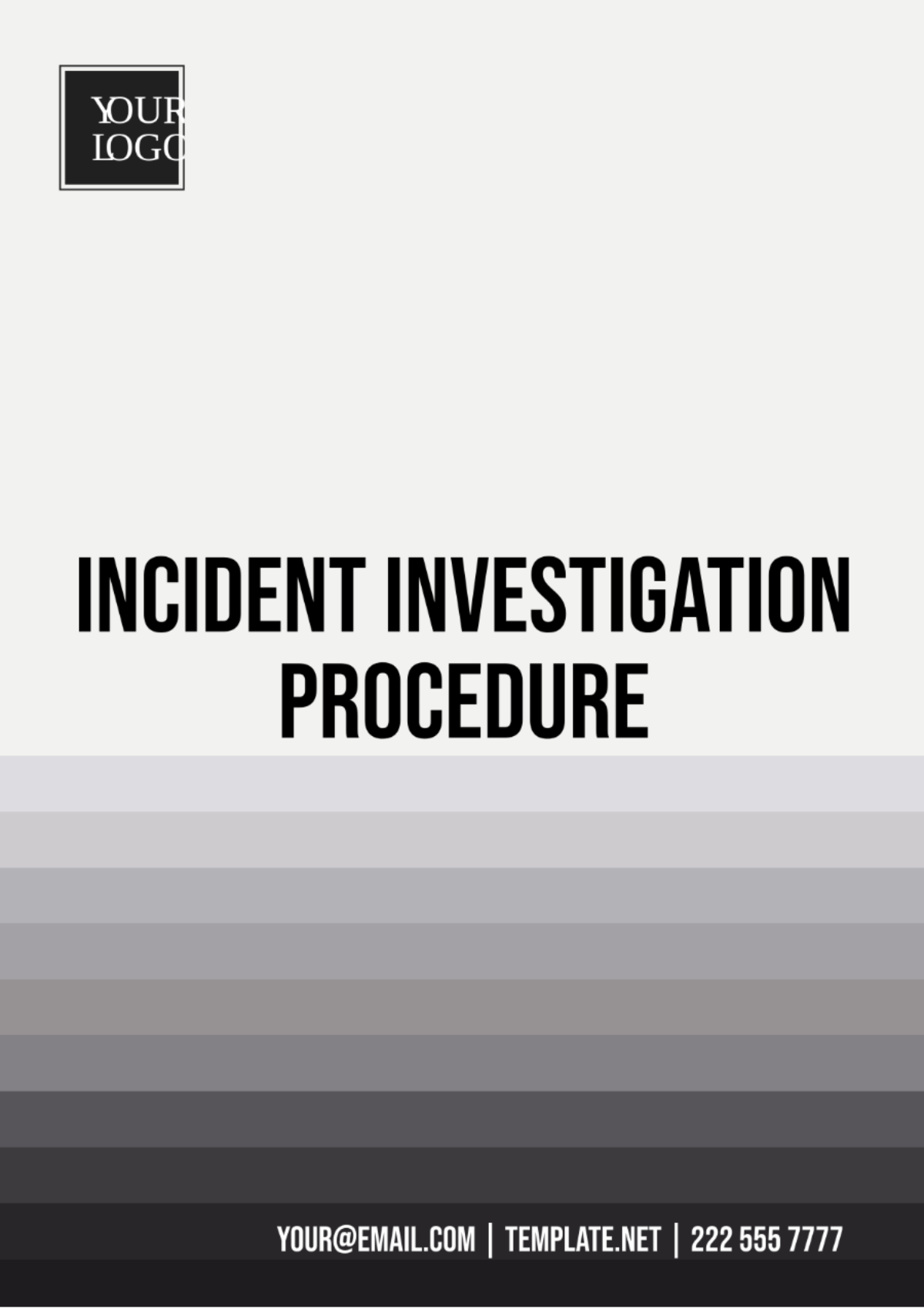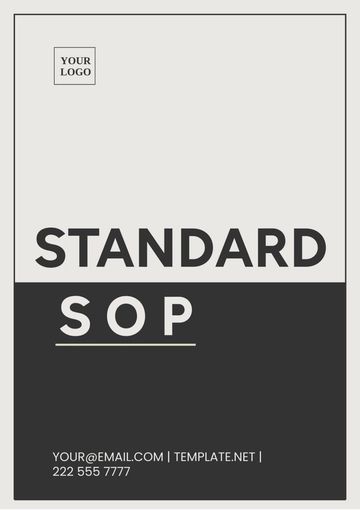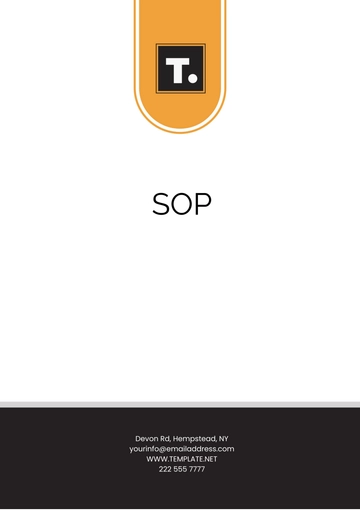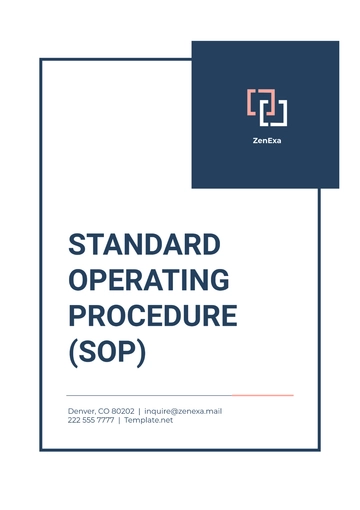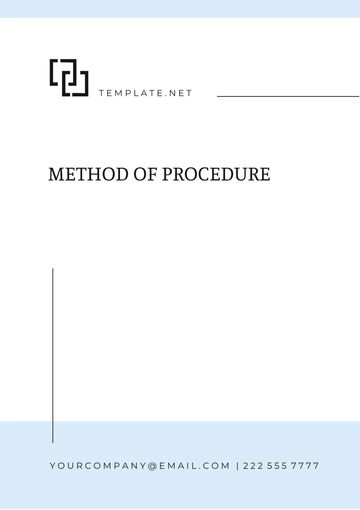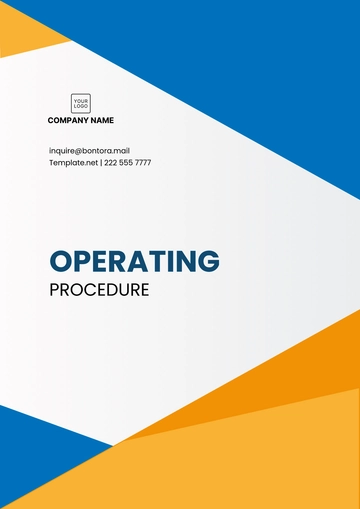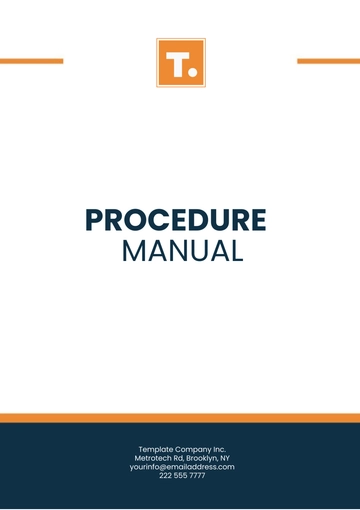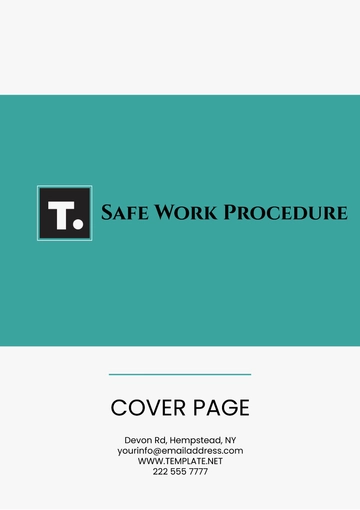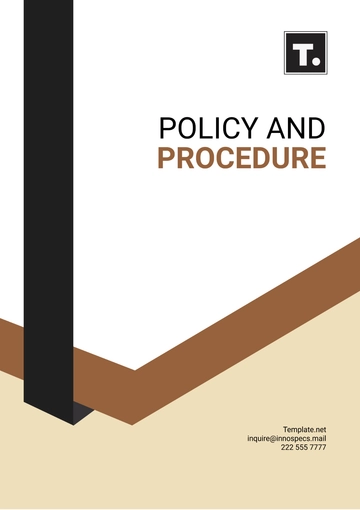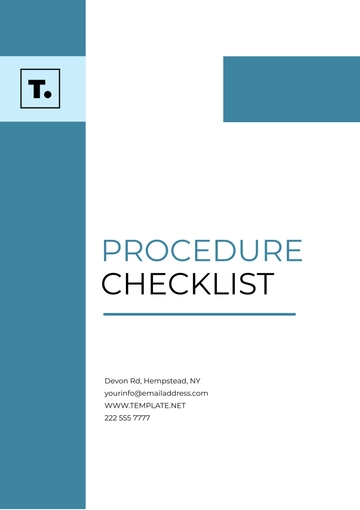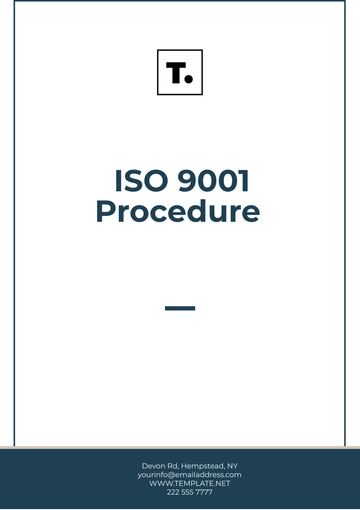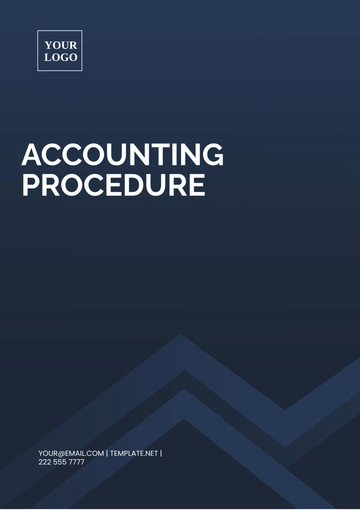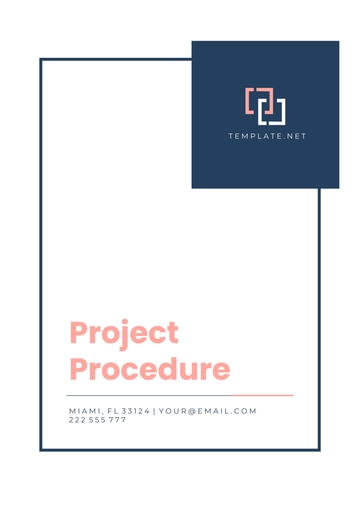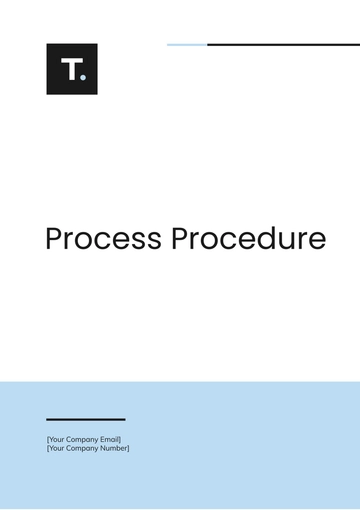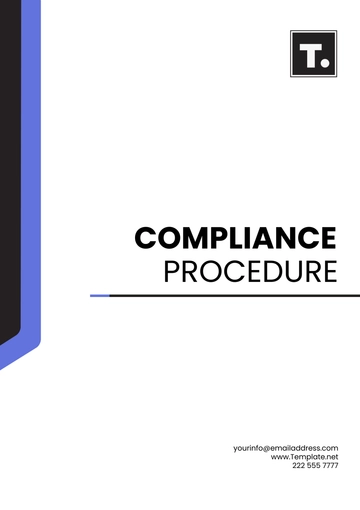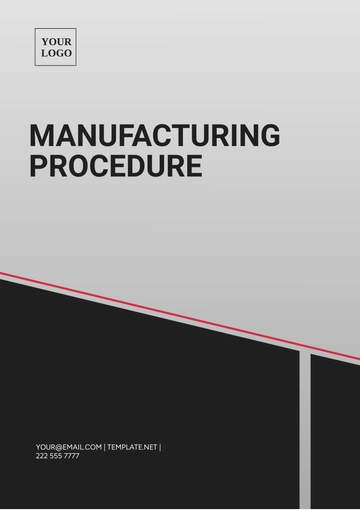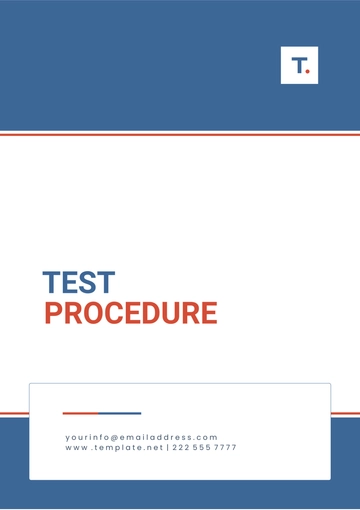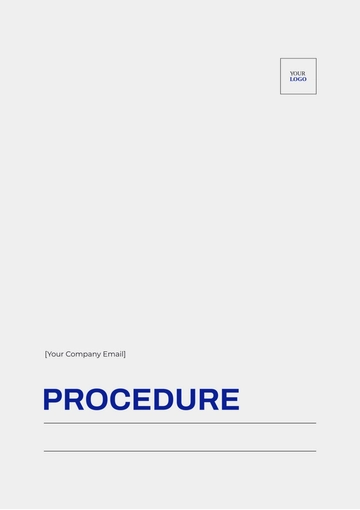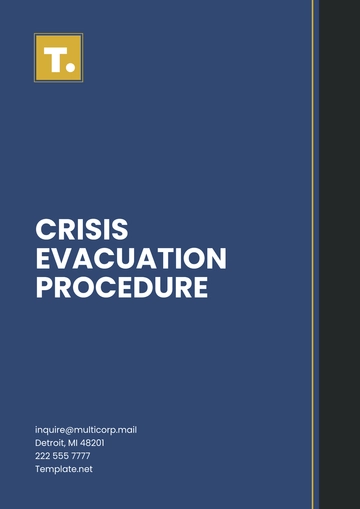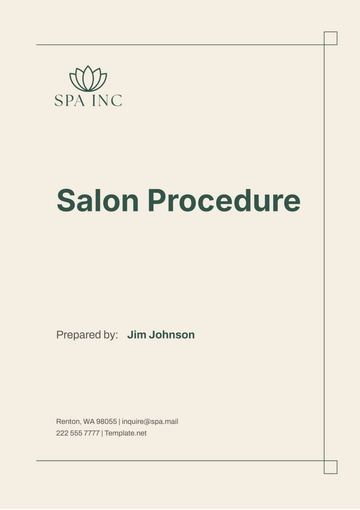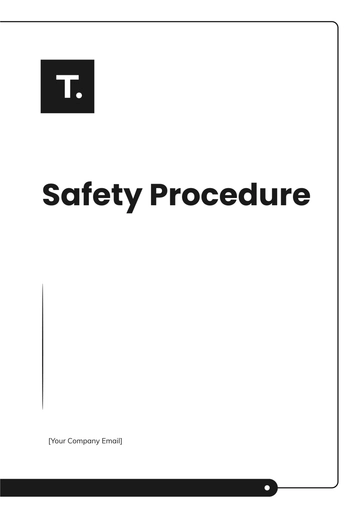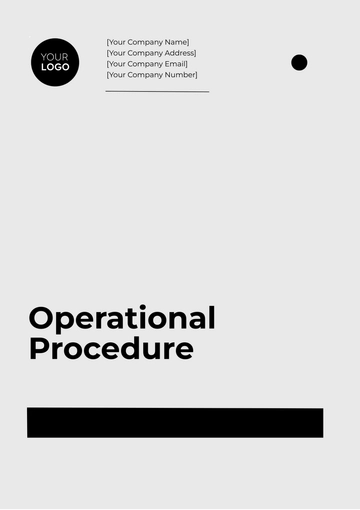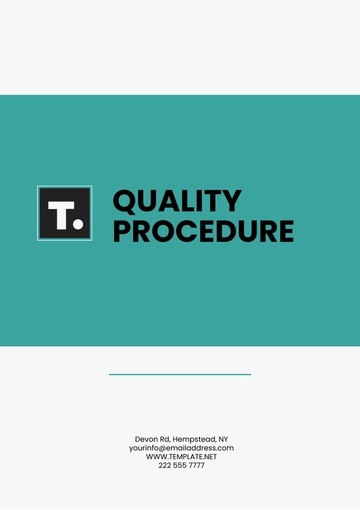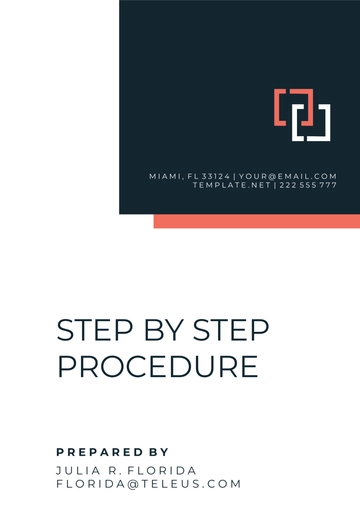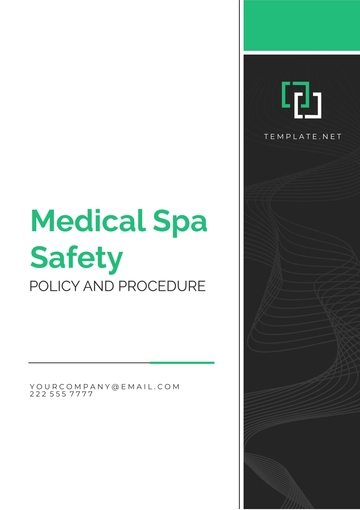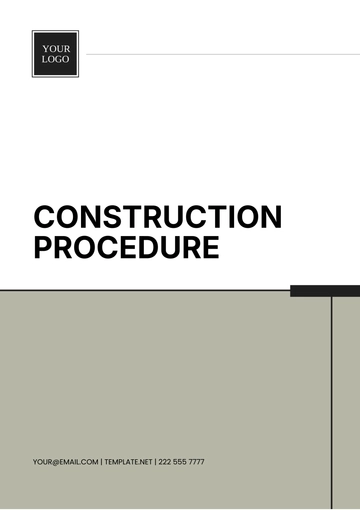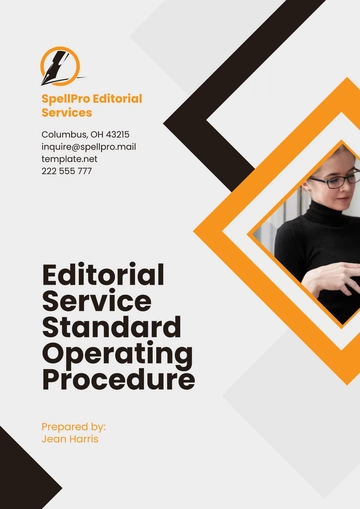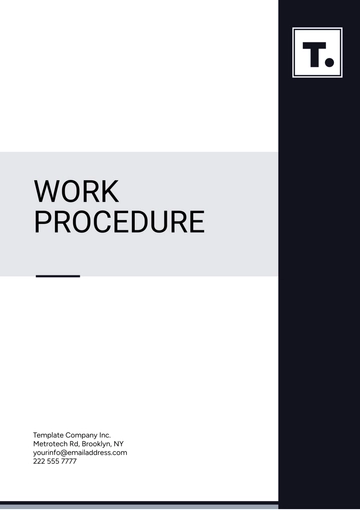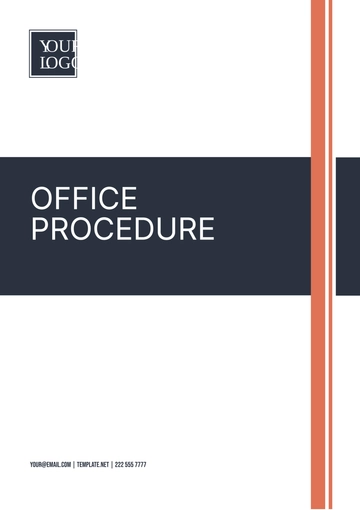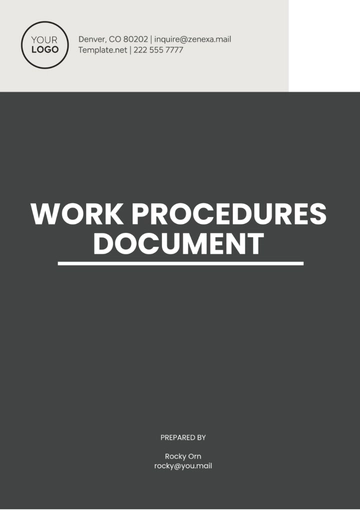Incident Investigation Procedure
Prepared By: | [YOUR NAME] |
Company Name: | [YOUR COMPANY NAME] |
Department: | [YOUR DEPARTMENT] |
Company Email: | [YOUR COMPANY EMAIL] |
Company Number: | [YOUR COMPANY NUMBER] |
Date: | [DATE] |
I. Introduction
This Incident Investigation Procedure outlines the steps for conducting thorough investigations following any workplace incident at [YOUR COMPANY NAME]. Its primary goal is to identify the root causes of incidents to prevent their recurrence and ensure the safety and well-being of all employees.
II. Scope
This procedure applies to all types of incidents within [YOUR COMPANY NAME], including but not limited to workplace injuries, equipment malfunctions, and safety breaches.
III. Purpose
The purpose of this procedure is to:
Ensure a systematic approach to incident investigation.
Identify and mitigate risks effectively.
Comply with legal and regulatory requirements.
Enhance safety culture by learning from incidents.
IV. Procedure
Step 1: Immediate Response
Ensure Safety: First, ensure that the area is safe for investigators and other personnel. Address any immediate risks to prevent further harm.
Notify Supervisors: Report the incident immediately to [YOUR SUPERVISOR'S NAME] or the designated safety officer.
Step 2: Incident Documentation
Collect Evidence: Gather physical evidence, take photographs, and secure any relevant equipment or materials.
Witness Statements: Interview witnesses as soon as possible to gather their accounts of the incident.
Step 3: Analysis
Root Cause Analysis: Use tools like the Five Whys or Fishbone Diagram to analyze the incident and identify underlying causes.
Document Findings: Prepare a detailed report summarizing the findings from the investigation.
Step 4: Action Plan
Develop Corrective Actions: Propose measures to prevent the recurrence of the incident based on the findings.
Implementation Plan: Schedule and assign responsibilities for implementing these corrective actions.
Step 5: Review and Closure
Review: Periodically review the implemented actions to ensure their effectiveness.
Closure of Investigation: Officially close the investigation once corrective actions are deemed effective and all documentation is finalized.
V. Reporting and Communication
Drafting Reports: Create comprehensive incident reports that include a summary, analysis, actions taken, and recommendations.
Internal Communication: Share findings with relevant departments and management to ensure transparency and organizational learning.
External Communication: If required by law or policy, communicate details of the incident to external parties such as regulatory bodies.
VI. Training and Development
Training Programs: Develop and provide training based on the insights gained from incident investigations to prevent future occurrences.
Awareness Sessions: Conduct regular sessions to raise awareness about the importance of safety and proper incident reporting procedures.
VIII. Monitoring and Evaluation
Track Progress: Regularly monitor the progress of implemented corrective actions to assess their effectiveness.
Evaluation Meetings: Hold meetings with key stakeholders to review the effectiveness of the incident investigation process and implemented actions.
IX. Additional Reminders and Tips
Act Promptly: Time is critical; begin the investigation as soon as the incident area is deemed safe.
Maintain Confidentiality: Protect the privacy of all individuals involved.
Seek Expertise: Do not hesitate to involve external experts if the incident investigation requires specialized knowledge.
Continuous Improvement: Use the findings from each incident to refine existing procedures and training programs.
X. Conclusion
This Incident Investigation Procedure serves as a comprehensive guide for handling and analyzing workplace incidents at [YOUR COMPANY NAME]. By following the steps outlined, we aim to foster a safe and compliant work environment, minimizing risks and ensuring the well-being of all employees.
Procedure Templates @ Template.net
